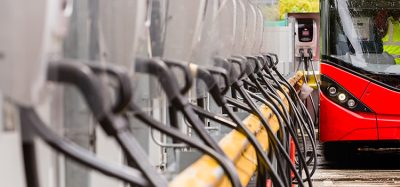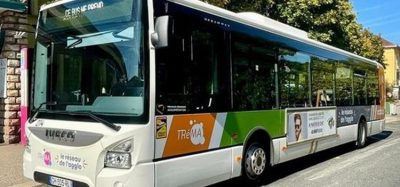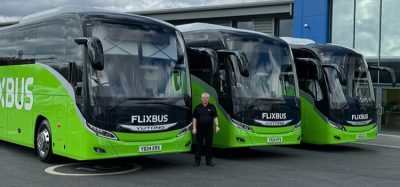The city in the city: the Norwegian smart city being developed from the ground up
- Like
- Digg
- Del
- Tumblr
- VKontakte
- Buffer
- Love This
- Odnoklassniki
- Meneame
- Blogger
- Amazon
- Yahoo Mail
- Gmail
- AOL
- Newsvine
- HackerNews
- Evernote
- MySpace
- Mail.ru
- Viadeo
- Line
- Comments
- Yummly
- SMS
- Viber
- Telegram
- Subscribe
- Skype
- Facebook Messenger
- Kakao
- LiveJournal
- Yammer
- Edgar
- Fintel
- Mix
- Instapaper
- Copy Link
Posted: 3 February 2020 | Martin Opdal Sandtrøen - Nordland County Council, Rune Eiterjord - Nordland County Council | No comments yet
The Smart Transport Bodø project is an innovative and unique opportunity to develop and test travel possibilities for an entirely new smart city neighbourhood in Bodø, Norway. Rune Eiterjord and Martin Opdal Sandtrøen from Nordland Country Council spoke to Intelligent Transport’s Luke Antoniou about the significance of this project and the complexities that come with trying to deliver the mobility solutions of tomorrow.


Credit: Gøran Kristensen
Could you tell us about your main focuses and projects that you are working on currently?
RE: We have a mobility project called Smart Transport Bodø. This project is focused on testing out new and innovative solutions within the old city, before development begins of a brand-new smart city in Bodø, in Nordland County, Norway. We have until 2025-2026 when the new airport will be built, and then 3,400 acres of land will be released upon which the new smart city will be built.
We want to create solutions as early as possible. At the forefront of our minds are people’s habits, how they will get to the new airport, around the new city, as well as the old city. We are trying to use nudging and gamification, piloting how we can change people’s behaviour towards greener, more sustainable mobility solutions.
MOS: You could say we are troubled by the same issue facing most public transport administrators these days – namely, having many legacy systems that are not connected to each other. One of the things we’re trying to do is to move our infrastructure online by using the ITxPT solutions – the community in which we are a strategic member of. On our buses, for instance, that means separating the hardware and software, allowing for bus operators to own their own hardware for ticketing and real-time information, while we control the back offices. Then we can make changes from the get-go, which are displayed inside the buses and in other transport offices. We are currently building a platform for this, a platform which will eventually enable Mobility-as-a-Service (MaaS) and allow the integration of city bikes, electric scooters and so on, among other transport modes.
What is your definition of MaaS?
RE: For us, it is a solution that provides people with greater choice of movement, the freedom to move in any way they want and might need at that moment in time. We want micromobility to be a primary solution for people. We don’t want them to use cars, or if they must, for it to be a shared car or some type of mobility solution rather than a car they own. For us, MaaS should mean travelling via shared modes of transport and moving away from the ownership model.
We need to solve the first- and last-mile problem with travel. A true MaaS transport concept needs to solve challenges through the whole journey, and not just digitalise our current options.
Most cities experience development continually, as they grow. To have this new city development happening all at once is quite a unique proposition. Does it provide you with a chance to pre-empt mindset change?
RE: Naturally, creating this brand-new city within the city will dramatically increase its area. We need to really consider mobility solutions and the way in which people will move between these new points. For this, we need accurate data on how people move. We’re going to pilot a ‘be-in, be-out’ solution, where a person’s mobile phone is connected via Bluetooth to a beacon inside a bus. It will register when a passenger boards and alights the bus without requiring any action from the passenger themselves. Even if a passenger needs only a single ticket, they can get that easily just by hopping on and then off the bus. We hope that data generated by pilots such as this will be key in showing us how we should build our bus stop stations and so on to accommodate our passengers.
We are trying to use nudging and gamification, piloting how we can change people’s behaviour towards greener, more sustainable mobility solutions
MOS: Equally, we have to ask ourselves: should there even be bus stops in our new city? While work on the new airport is already underway and due be ready by 2026, the new city is not yet being built. It may be another 10-15 years until we actually begin developing our new smart city. If we look back to where we were with mobility, smartphones, gadgets and technology in general 15 years ago it’s clear to see how much changes in that time period. This is why our small-scale pilots and tests are so important right now.
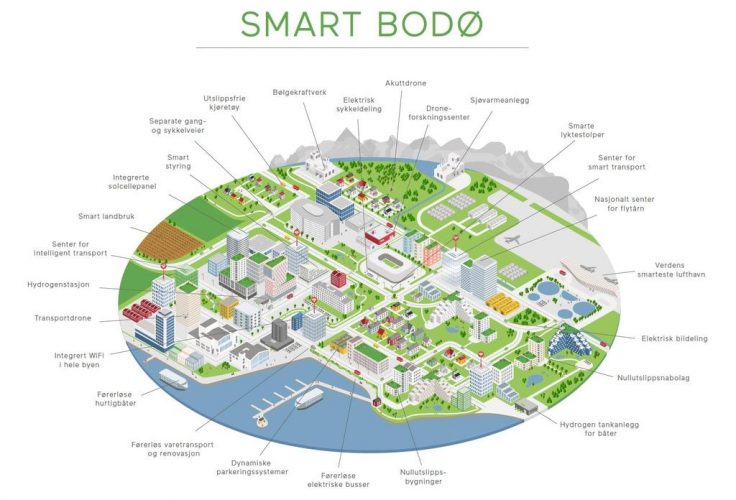

Smart City – Bodø kommune
Do you feel this project could lead the way for others of a similar kind in the future?
RE: The Smart Transport Bodø project is, in essence, a pre-project before we actually start planning what to implement in Bodø and we hold responsibility for all public transport in Nordland. We will also want to test our new systems out in rural areas and places with smaller populations (the population of Bodø is approximately 53,000 people). We want to test the potential scaling of this project.
There are many people following us, watching how we are going to plan and conduct pilots to enable a new future. We may have won the main prize, but there were also five other winners in the competition, with whom we will share and collaborate in creating this new path.
MOS: One of our key goals is collaboration – working together with both the public, but also private companies. Discussions and even differences often lead to better solutions. Our world is full of cool gadgets and amazing technology, but ultimately, it’s the humans that are the solution. The people of our city come first, and the toolbox is technology.
How significant is the way in which information and data is exchanged in Norway to your project?
RE: Norway is at the forefront when it comes to collaboration. We have a national organisation, Entur, that provides a seamless travel planner that works for the whole of Norway and a single smartcard that allows people to travel anywhere in the country. It is a standard format that acts as a bottom layer to any new development. We are going to develop this platform as a mid-layer and then provide micro-services on top. Without this foundation, our new platform wouldn’t be possible. We have begun collaborating with another public administrator to create a new platform that works on top of this. If more organisations want to contribute and build it further, they can, and so we foster a community that builds on these common groundworks, rather than each having their own proprietary solution.
All solutions are built on open source which gives us the possibility to be more innovative and it fuels more collaboration towards small start-ups and the private sector.
There are other public transport administrators, such as Movia in Denmark, that are doing well in this, but the difference in Norway is that we have a national perspective.
Without a willingness to do it, it will never happen. In somewhere like the UK there is a sense of fear that this process is about giving up information, giving up data and losing it. The perception seems to be one of losing out on something, when actually the potential benefit is for a system far greater than they currently have.
All solutions are built on open source which gives us the possibility to be more innovative and it fuels more collaboration towards small start-ups and the private sector
In most of Norway’s transport options, it’s the public organisations that control the revenue stream. This gives us the advantage over the private actors that each partner only earns money for the work we have contracted them to. This means it’s easier for them to collaborate with us as they don’t also have their private income to consider. They will be paid a fixed fee for their services no matter how many or how few passengers we have.
MOS: If you consider digitalisation in three steps, the first being to use digital tools and the second to automate processes, then the third and most important part is to change work processes. In Norway in general there is a shift towards being more customer orientated in the way we deliver our services. This is true in the country as a whole – not just in public transport. It is this much broader customer perspective that will be an important strength as we go forward.
The time we have developing this new platform is going to enable our organisation to learn more about how we develop new solutions and open up the possibilities for even more collaboration. There will be possibilities in the future that we don’t have at the moment, or perhaps don’t have the tools for yet, but in 2021 we may do.
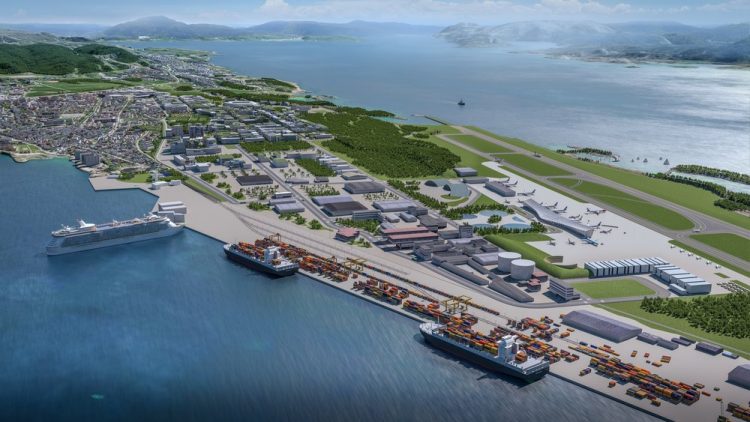

Ny flyplass – Bodø kommune 2
Is there a risk that in five or 10 years’ time, little will have changed and you’ll find yourselves still asking the same question – how do we futureproof our business and our platform?
RE: From an innovation perspective, disruption is good. We can aim to futureproof as much as possible, but in 20 years’ time it is inevitable that we’ll be asking ourselves, “why didn’t we think of this?” The key point is that today’s platform is better than it was before.
Our goal is to deliver better transport solutions for the public, but also ensure that they are green and sustainable. Our tools are this digital platform and these microservices. We want an open solution that enables us to be faster to market with new solutions.
We have to take this action now so that we have a better future. This realisation is dawning on people everywhere. We need the public on our side, understanding that they also have a responsibility to use the shared transportation solutions on offer, otherwise, they will just continue using their cars. Therefore, it is important to change people’s habits and thoughts about mobility as early as possible, so that we can meet a greener future with more sustainable mobility solutions in our smart city together.
Related topics
Fleet Management & Maintenance, Infrastructure & Urban Planning, Passenger Accessibility, Sustainable Urban Transport
Related cities
Norway
Related organisations
Nordland Country Council





